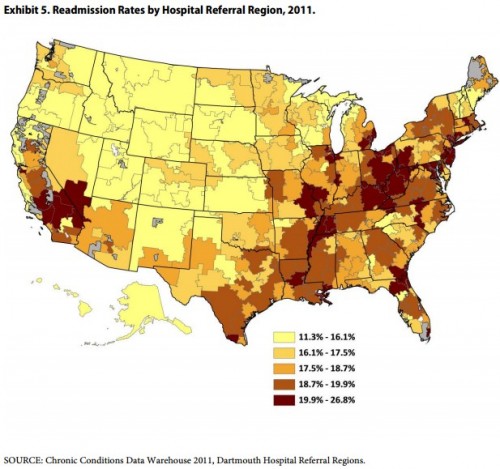From a recent paper by Gerhardt et al. (PDF):
There is clear geographic clustering, with relatively lower rates in most of the western half of the country, with the exception of in and near California, and relatively higher rates in the eastern half, with the exception of the upper mid-west. I wonder to what extent this variation can be explained by disease burden vs. system factors (acknowledging the endogeneity of diagnoses).



